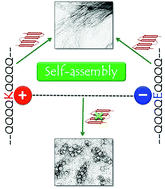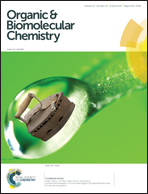Amyloid nanospheres from polyglutamine rich peptides: assemblage through an intermolecular salt bridge interaction†
Abstract
We have shown the conversion of an amyloid fiber forming nucleation pathway of polyglutamine (polyGln) to a non-nucleated pathway, generating nanospherical amyloid particles. This is achieved by engineering an intermolecular salt bridge interaction between the positively charged lysine and the negatively charged glutamate residues, in two polyGln rich peptides. The mechanism of their formation is characterized by chromatography, infrared, fluorescence and imaging methods.


 Please wait while we load your content...
Please wait while we load your content...